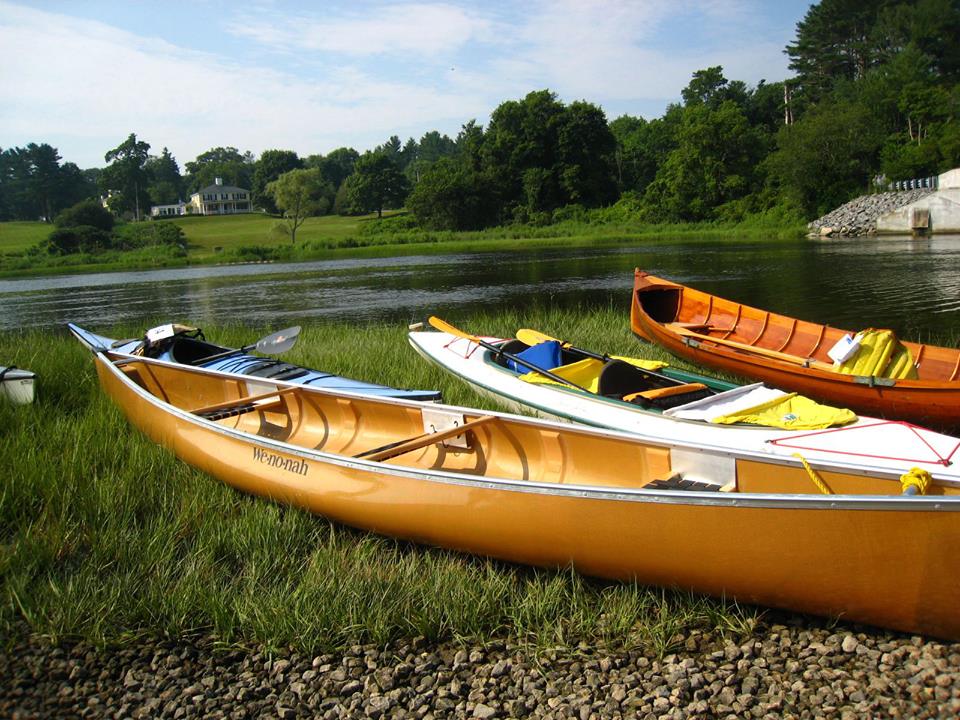“Did
You Know?”
Community-Building
through Watershed Recreation
By Shalen Lowell
“Everybody needs beauty as well as bread,
places to play in and pray in, where nature may heal and cheer and give
strength to body and soul.”
So
wrote John Muir in his 1912 book, The
Yosemite. Muir spoke of the restorative
quality of our natural environments, and as such recognizes them as integral
parts of our lives. Much as we can benefit from nature in its spiritual as well
as material resources, we must recognize what we can do to repay the
environments in which we live.
 |
| Dorie Stolley, "Great River Race Preparation" |
As
many of the southeastern Massachusetts watershed associations realize, one of
the best ways to get people, whether adults, children, concerned citizens, or
budding environmental activists, involved in their communities is through recreational
activities. Many of these associations bolster this sense of community with
volunteer opportunities. Some volunteering does not require a big commitment
but, nonetheless, gets people out for a fun and active day as a means of
contribution.
Participating
in river herring counts encourages people to take action and learn about the
environment of their community, in a small and simple way. Herring counts
determine how many herring are returning to a system or how many are blocked by
a specific dam, and citizen involvement is a perfect and manageable way to
help. Two organizations, the North and South Rivers Watershed
Association (NSRWA) and the Jones
River Watershed Association
(JRWA) accept volunteers in the spring to assist with herring counts, and for
the JRWA this occurs at the Elm Street dam in Kingston, Massachusetts.
The JRWA also sponsors other enjoyable activities such as a summer hiking series,
family-friendly hikes from Jones River headwaters to Kingston Bay. Other
recreation in the Jones River watershed includes boating from Kingston Bay out
to Cape Cod Bay, and canoeing and kayaking from Mulliken's
Landing, a put-in on the Jones River.
 |
| Shalen Lowell, "Neponset River Reservation" |
The Neponset River
Watershed Association (NepRWA) also
recruits volunteers to bolster community-building efforts with their Citizen
Water Monitoring Network (CWMN), for which volunteers help with water sampling
in Neponset waterways. Public parks in the Neponset watershed provide great
recreation opportunities. Where the Neponset empties into Dorchester Bay sits Squantum Point Park, a former Navy
airfield. The Lower Neponset River Trail, a
multi-purpose trail and “corridor park” that runs along the Neponset River and
alongside old railroad tracks, is ideal for cycling, running and walking
because of its seclusion from traffic and resting spots that include
information about local wildlife and maps. The Neponset watershed also has a
boat launch at the Neponset estuary.
The recreational activities of the North
and South Rivers watershed are similar to Neponset’s. Kayaking,
canoeing, and motor boating
abound in the North River. Residents along the river build decks to which they
dock their boats and from which they fish or jump into the river to enjoy its
cool waters by swimming. The NSRWA also sponsors many other fun activities,
such as water quality monitoring by volunteers (like the NepRWA), the Great
River Race, Yoga at the River’s Edge, and River Cleanup Days.
Much like the North River, Great Herring Pond, of the
Herring Ponds watershed, is a hotspot for water recreation. Residents in
Plymouth and Bourne partake in swimming, kayaking, fishing, sailing, and even
jet skiing. There is a Great
Herring Pond public access boat launch in Bourne from which people
depart into the pond. Little Herring Pond has a public
access point as well for canoeing and kayaking, however motor boating is
forbidden because of its shallow waters.
 |
| Shalen Lowell, "The NSRWA Great River Race" |
The Little and Great Herring Ponds are two of the activity
hubs in this watershed, over which the Herring Ponds Watershed
Association (HPWA) watches. In this watershed, there are many parks and
day camps as well: Camp Clark, just ashore of Hyles Pond, is a YMCA day camp
for children and has nature trails and swimming; Hedges Pond Recreational Area
is a Plymouth town park open to the public on afternoons and weekends. There is
a Massachusetts Maritime Academy facility on Great Herring Pond that
offers sailing lessons and rowing. The Carter Beal Reservation Area just to the
south has a lovely park and trails. Finally, the Herring Run Recreation Area
along Cape Cod Canal fronts a paved pedestrian trail, which is closed to
traffic and used for biking, jogging, and walking and the Canal abounds with
boats.
Just as outdoor recreation is important for our spirits and
health, it is equally as vital to community-building and connecting networks of
dedicated citizens. These ponds, rivers, and parks not only bring us together,
but teach us to appreciate the inherent value of our environments and a desire
to preserve them.
If you would like to volunteer and be active in
your community contact your local watershed association today. To learn more
about the southeastern Massachusetts watersheds and how to contact your local
watershed association visit the Watershed Action Alliance website and http://watershedaction.org/index.php/watershed-matters/know-your-watershed.









